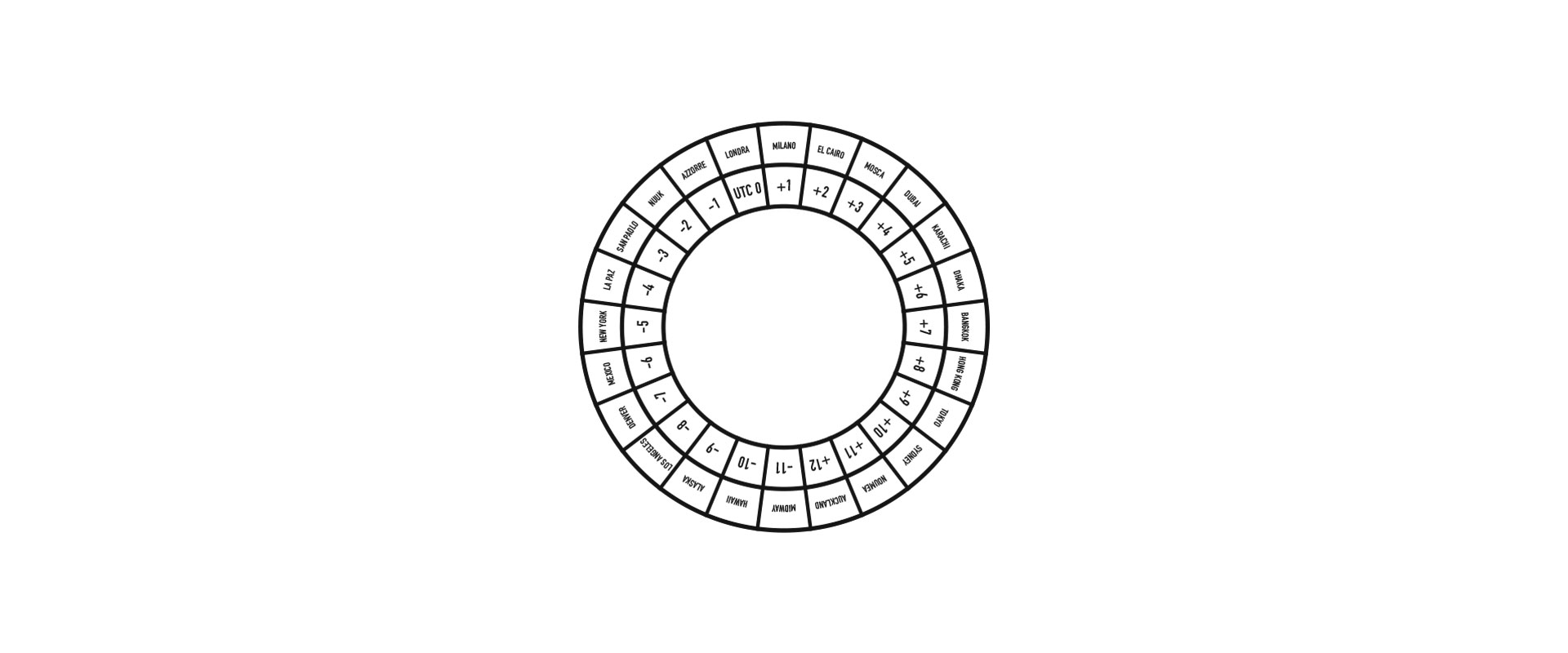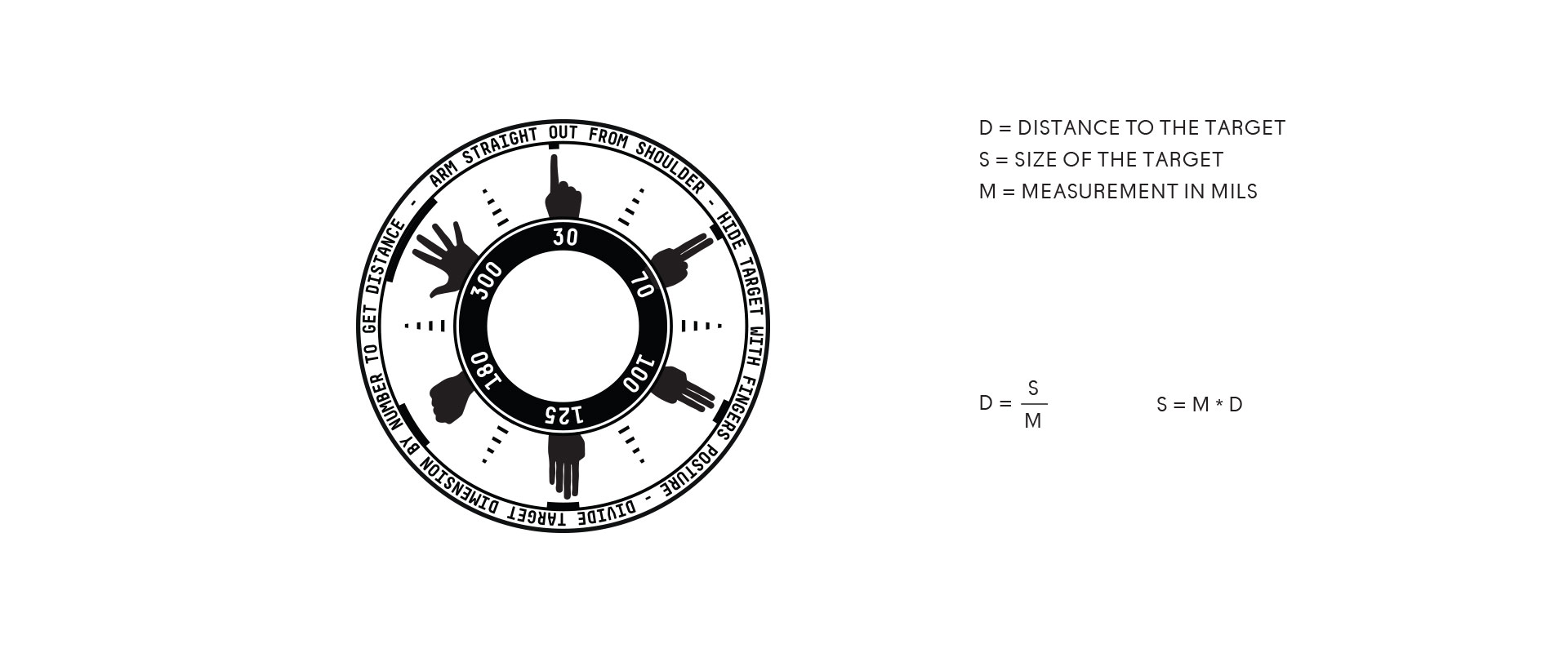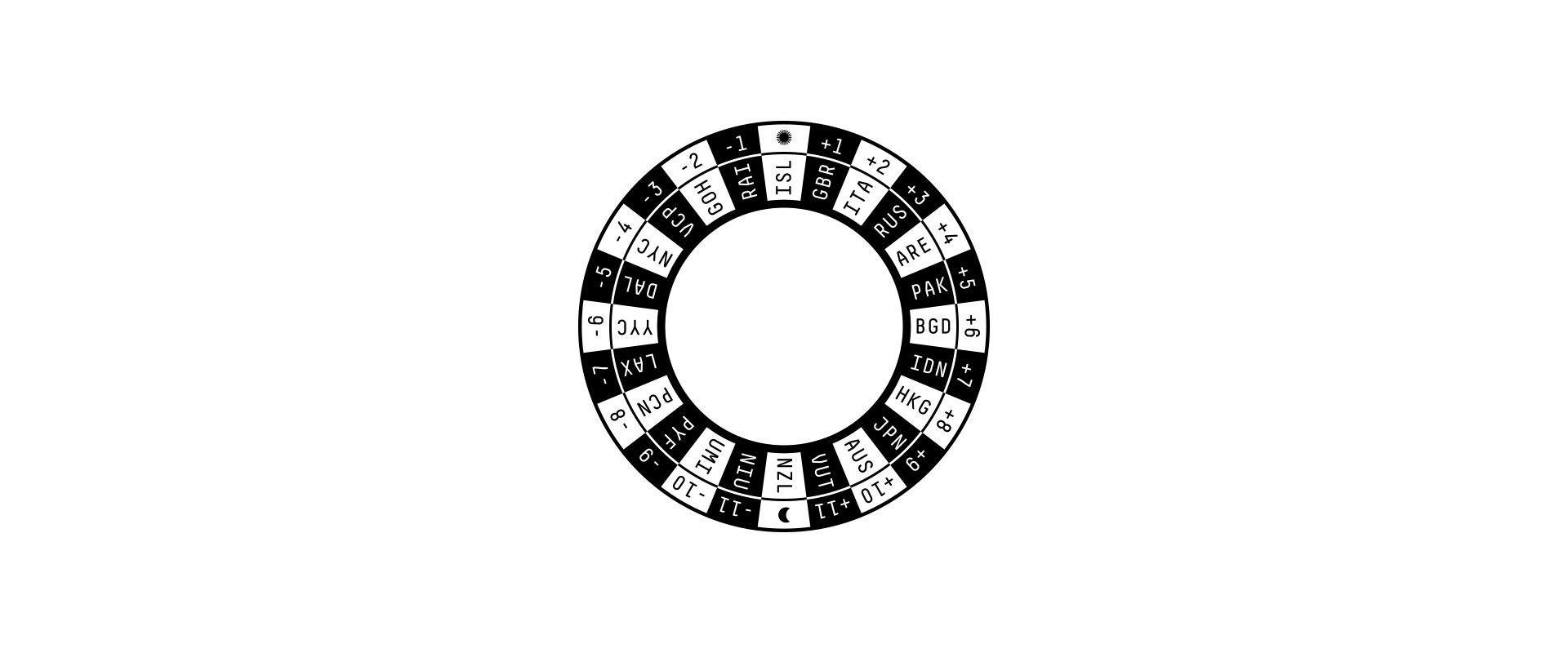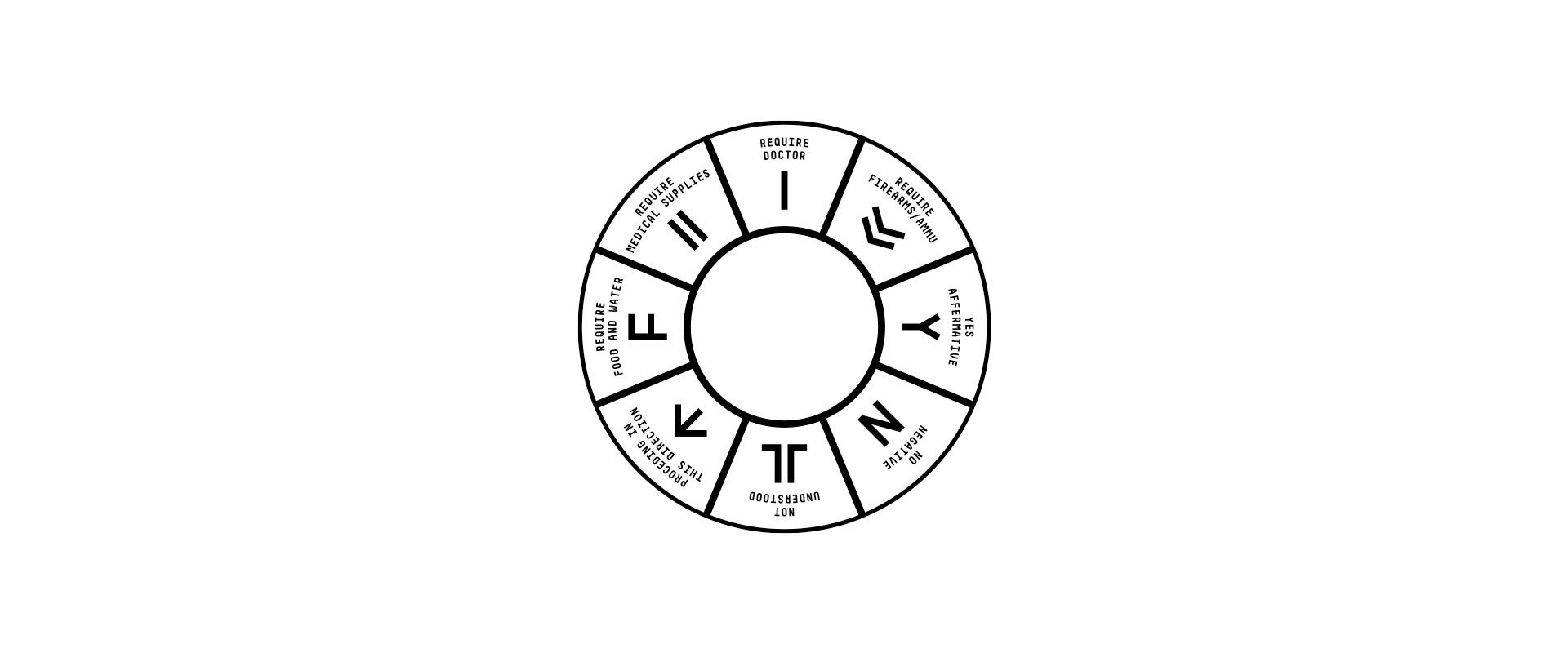TABLE OF CONTENTS
- HOW TO USE THE CASEBACK SCALE
- THE GLOBAL TIME SCALE CASEBACK
- HOW TO USE THE CASEBACK MILLIRADIAN SCALE
- THE GLOBAL TIME SCALE CASEBACK
- HOW TO USE THE AIR TO GROUND EMERGENCY CODE SIGNALS CASEBACK
- THE QUATTRO STAGIONI CASEBACK
- THE ROSA DEI VENTI CASEBACK
HOW TO USE THE CASEBACK SCALE:
You can use the caseback scale to convert measures in miles, meters, yards, feet, inches.
The values on the connecting lines between units are the numbers of time the smaller unit fits into the larger one. Units are displayed in counter-clockwise order from large to small.
You can convert any measure simply multiplying or dividing the distance by the number shown between the units.
[ MI > M > YD > FT > IN ]

THE GLOBAL TIME SCALE CASEBACK:
You can use the global time scale caseback chart to convert between timezones. The internal ring shows the hours differences corresponding to each destination allowing you to easily convert time between locations.

HOW TO USE THE CASEBACK MILLIRADIAN SCALE:
A milliradian (mrad), is the angle formed when the length of a circular arc equals 1/1000 of the radius of the circle. Since the radian expresses a ratio, it is independent of the units of length used. It is used to approximate to deterimine size and distance with high accuracy.
Given distance or size the scale can be used straightening your arm and covering the target with your fingers once established the ratio you can simply multiply or divide to get either size or distance of any object.

THE GLOBAL TIME SCALE CASEBACK:
You can use the global time scale caseback chart to convert between timezones. The external ring shows the hours differences between the different time zones allowing you to convert time between locations.

HOW TO USE THE AIR TO GROUND EMERGENCY CODE SIGNALS CASEBACK:
In case of distress, describe the ground to air emergency signal codes on the ground so that the search aircraft or rescue party can easily recognise them. Each letter should be at least 10 m? in size with its top and bottom facing the directions of south and north, respectively. When describing the code on a field of snow, dig a ditch or pile up snow in the form of the letter so that it can be discerned by the shade. If the victim is weakened and does not have enough physical strength to describe the codes on the ground, use clothes or equipments to form the letters. Grass, branches of trees or stones can also serve this purpose.
In rescue operations, the rescue aircraft uses a loudspeaker or a communication tube to send messages to the victim, but it is difficult for the victim to respond to the rescuer. The ground to air emergency signal codes will facilitate communication between them and help rescue operations progress smoothly.

THE QUATTRO STAGIONI CASEBACK:
The dates of solstices (summer and winter) and equinoxes (spring and autumn) mark key astronomical events in Earth's orbit around the Sun. These dates engraved on the caseback provides the wearer with a handy reference to track the changing seasons and celestial events.

THE ROSA DEI VENTI CASEBACK:
A Rosa dei Venti (Italian for "Wind Rose" or "Compass Rose") is a diagram that shows the orientation of the cardinal directions (North, East, South, and West) and their intermediate points. It is used in navigation, meteorology, and cartography to represent wind directions and compass bearings.
The traditional Italian version includes historical wind names, such as Tramontana (N), Greco (NE), Scirocco (SE), and Maestrale (NW).

Was this article helpful?
That’s Great!
Thank you for your feedback
Sorry! We couldn't be helpful
Thank you for your feedback
Feedback sent
We appreciate your effort and will try to fix the article